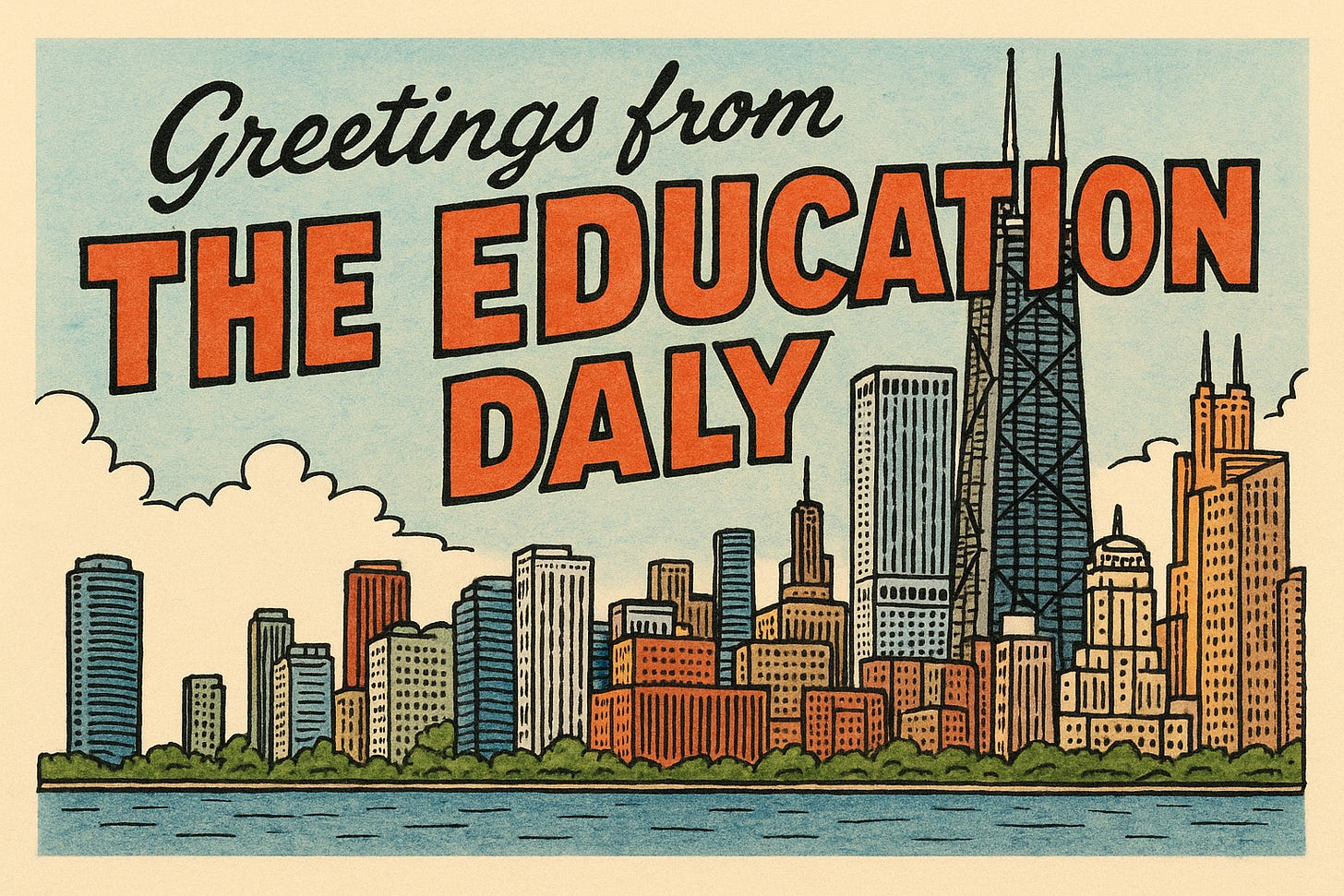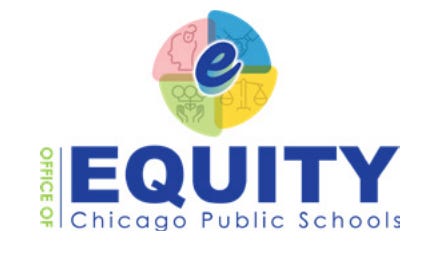A Requiem for Equity
It was once a unifying idea. Now, we need a post-mortem and a roadmap for what comes next.
Come with me to Chicago, a city with roughly equal numbers of White, Black, and Hispanic residents. How are children from each community doing in school?
Over the past two decades, scores for the city’s White students on the National Assessment of Educational Progress (NAEP) rose substantially. In 4th grade reading, the average White student is now scoring 13.1 points above peers from 2003.
What does that mean? Ten points on NAEP is approximately one grade level, so learning for White students has improved by more than a year.
Gains in math have been even more remarkable: White students are scoring nearly two years higher in 4th grade and more than two years higher in 8th.1
How about the other kids? Not so good. Hispanic students have gained ground but not nearly so much as White peers. Black students have made zero progress in reading. Black 4th graders are actually reading worse than their predecessors in 2003.
Knowing this dynamic exists — large progress for White students that has not been broadly shared — one might expect Chicago to be putting together some sort of special strategy to ensure all racial groups succeed. And perhaps that strategy should pay particular attention to Black students.
Guess what? Chicago did exactly that. This past February, it announced the Black Student Success Plan, described as “a firm commitment by the district, a roadmap, and a call to action for Chicago’s educational ecosystem to ensure equitable educational experiences and outcomes for Black students across our district.” Good job, Chicago!
Well, it would be considered a good job under most circumstances.
The Trump administration felt differently. It responded with a civil rights investigation, arguing that “by focusing on remedial measures only for Black students,” the district violated federal law. Next, the administration cited the Black Student Success Plan as justification for canceling a grant to Chicago’s magnet schools.
Perhaps you find this confusing. I certainly do. Under No Child Left Behind (NCLB), states were required to disaggregate data. If subgroups lagged, schools had to develop interventions to raise their performance. Otherwise, districts faced penalties, including sanctions and the possibility of lost funding. It was the law.2
It’s still the law. The Every Student Succeeds Act contains nearly identical provisions.
Yet here we are. That approach has been deemed illegal. What gives?
Our answer lies in a logo at the top of the Black Student Success Plan crediting its author: the “Chicago Public Schools Office of Equity.”
Ah - equity. Not long ago, the term was ubiquitous in education circles. It was the centerpiece of strategic plans for districts, non-profits, and philanthropies. Many of us found it difficult to speak or write consecutive sentences without referencing it.
But no more. Equity is a political football, quite controversial. A Trump administration day one executive order sought to dismantle diversity, equity, and inclusion (DEI) programs.3 In response, websites and mission statements have been scrubbed to remove any mention of them.
This seismic shift marks the end of the Equity Era in American education. We can either curse the unfairness of it all or get busy planning what’s next.
What is equity?
My preferred definition is “what kids actually need to succeed.”4 Equality under the law - desegregated schools, non-discrimination protections - was one thing. But legislation and court orders from the 1950s through the 1970s yielded only marginally better outcomes. Equity described the elements that were required to get the job done: fair access to enrollment, sufficient funding, clean/safe facilities, good textbooks, qualified teachers, clear standards, advanced coursework options, and high performance expectations.5 Equity was equality in practice.
During the Accountability Era, which lasted roughly from George H.W. Bush’s 1989 education summit through the widespread issuance of NCLB waivers in 2012, equitable performance gains were the central outcome schools and districts were expected to produce.6
As the concept of equity ascended in prominence during the 2010s and accountability receded, equity absorbed broader dimensions. Many districts paid more attention than before to the racial composition of faculty, patterns of student discipline, and the treatment of race, identity, and history in curricular materials.
These new areas of focus didn’t come out of nowhere. Leaders were responding to data showing that some groups of students still did not feel safe, supported, and included.
Critics, however, felt that equity had drifted beyond its remit, morphing into publicly sponsored political activism with little connection to the performance improvements that had once been promised. They attacked DEI and called for the entire concept to be removed from schools. The equity consensus has rapidly unraveled.7
Chicago’s Black Student Success Plan embodies the conflict nicely. It is grounded in the district’s mission to “provide a high-quality public education for every child, in every neighborhood.” It leverages NCLB-era tools like annual reporting, progress monitoring, and continuous improvement. It sets a goal to “accelerate growth and attainment for Black students” within five years. All of this is consistent with the classic definition of equity.
But that’s not all it does. The document is peppered with ed school jargon like “liberatory thinking,” “healing conditions,” and calls for educators to “critically examine their own identities and privileges.” There are numeric targets for reducing suspensions of Black students but no such goals for math or reading performance. If the Trump administration has one of those Ghostbusters meters tuned to detect wokeness - and without question, they do - it caught fire when they scanned this plan.
Personally, I can live with the Black Student Success Plan. It’s sometimes mushy and performative. An easy target. I have notes. But the district is trying to do its job: ensuring all its students have what they need to succeed. In past decades, Black students have not had that - and their potential has been shamefully squandered. We should focus there.
Alas, my opinion doesn’t matter. At this point, equity has become politically coded. I concede the point. For progressives, it remains a mom-and-apple-pie virtue. For conservatives, it is a veneer for unlawful discrimination. Never the twain, as they say.
The upshot: Polarization about the term “equity” means it cannot realistically be the foundation for a broad, cross-partisan project to improve education, as it once was. We need a new vocabulary. Because we need that cross-partisan project.
RIP, equity.8
After equity
I’m optimistic. Seriously. I believe there remains a meaningful consensus about what our schools are supposed to do. Yes, education has declined in political importance and both parties have catered to their flanks. But there’s a path.
Let’s start by celebrating that equity as a concept was a huge step forward. It moved us beyond broad school and district averages, which disguised the neglect of low-income students. We need to keep that part. If we don’t want to call it equity, fine. I’m not the language police. But when we say “all” kids, it needs to mean all.
So what’s a list of things all kids deserve that can maintain popular support?
1. High standards and high support
Lower expectations in the wake of NCLB and the pandemic were a mistake. Grade inflation harms struggling students the most by giving them little reason to try. We need to ask our students to achieve real learning milestones and ensure they have the tools to get there.
2. No ceilings on advancement
Every student should have access to as much academic rigor and advanced coursework as they are willing to tackle. Slowing high-performing students down in the name of reducing gaps with lower performing students is counterproductive and extremely unpopular with the general public. Pass.
3. Practical life skills
Punctuality, attendance, time management, attentiveness, and persistence are just as important as academics. We do not want these little darlings living in our collective basement in 20 years. Some schools have surrendered in recent years to student disengagement. Let’s do the opposite. School should be where young people master the habits that will determine whether they thrive as adults.
4. Healthy tech habits
No student should graduate from a K-12 school system without demonstrating the ability to use and limit technology. AI fluency will be required for many jobs of the future. The ability to pry oneself away from addictive screen behavior will be required for all of them.
5. Affordable childhood
Public schools are free but they are just the beginning of what constitutes a well-rounded upbringing. Families need help paying for sports, summer camps, tutoring, music lessons, and dance classes. When activities become too costly, privileged kids get to do them and lower income kids don’t. We can’t accept that. The advent of Education Savings Accounts (ESA) in red states is creating an appetite for flexible dollars that can be tailored to each child’s passions. A new federal tax credit may bring this concept to many more states. If properly tailored, it can be a powerful tool for leveling the playing field.
Did you notice we did all of that without saying equity?
Our verbiage matters less than what we achieve. We can stop scrubbing websites. I don’t think Chicago’s Black families are invested in language wars. Like all families, they want a future for their kids. And they deserve one. Their communities should share in the benefits of education. Yes, we’ve made some progress on that front, but not nearly enough. The ideal of equity has often superseded the reality of it.
Finally, neither side in this debate has a monopoly on righteousness. Yes, attempts to broaden the meaning of equity probably contributed to its demise. But menacing school systems for their commitment to serving minority kids, as the Trump administration has done, is wrong-headed and will backfire. It’s a betrayal of our most fundamental American values.
So how about a truce? Let’s do a better job for students and people can call it whatever they want. Even equity.
BONUS: Chris Stewart posted a great rebuttal to my piece that’s well worth reading. If you don’t already follow him, you should!
If not for COVID-era setbacks, these figures would be even larger.
Research suggests it worked pretty well, too - particularly in math.
In a bit of symmetry, Biden’s early executive orders enshrined equity as a federal priority.
I didn’t make this up myself. Several folks suggested something very similar when I asked for their definition.
Richard Elmore and Susan Furhman captured many of these concepts in their 1995 paper on “opportunity to learn” standards.
The passage of the Every Student Succeeds Act in 2015 put a legislative exclamation point on the end of the Accountability Era, but by then the emphasis for several years had been adoption of priority policies, including Common Core standards, school turnarounds, and teacher evaluations. I say this as someone who was quite on-board with much of it at the time.
This is true far beyond K-12 education, of course. The Supreme Court has ruled that race-conscious admissions programs at several universities, which were done mainly under the auspices of equity, are unconstitutional.
“Daly came out against equity!” Nope. However, if you are moved to send an angry email, you are welcome to do so. There is just one rule: Please do not write WHOLE SENTENCES in ALL CAPS. This is a family show.





All your posts shed a lot of light on the debates. This one became a writing prompt for me this morning. It's safe to say your post was successfully thought-provoking :)
I love this point in particular: "Families need help paying for sports, summer camps, tutoring, music lessons, and dance classes." Probably the most eye-opening experience I've had as a parent whose kids attend school in a big, urban district (Baltimore) is the level of access my kids have to extracurriculars (because of our financial resources) vs many of their peers. Those extracurriculars have been critical and incredibly impactful in my own kids' development (particularly in the other piece you mention--non-academic habits/skills)--and I think it's a real miss we haven't done a lot more for lower-income families in that space. Thanks for writing Tim, always thought-provoking!